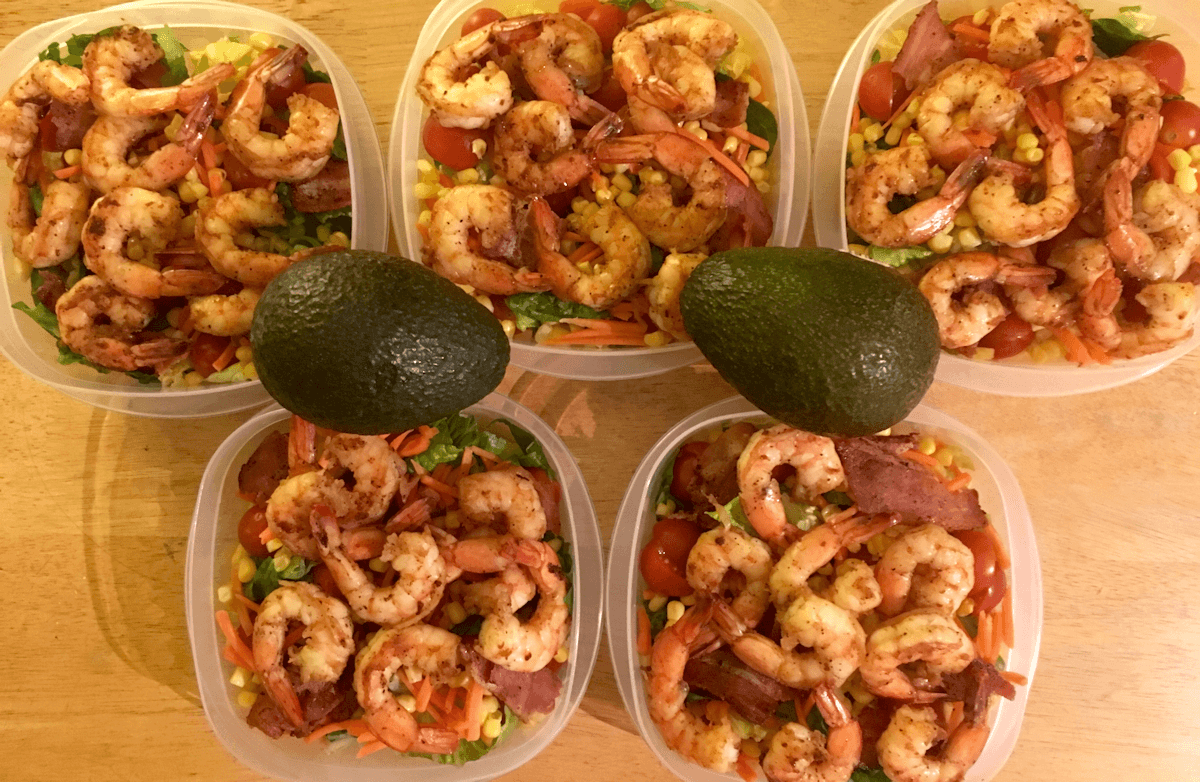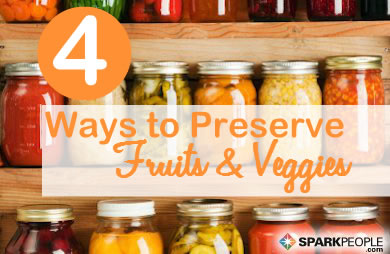|
Salads stacked in hip mason jars or a sea of matching Tupperware—it's the stuff of Instagram dreams and has the added benefit of ensuring you never having to stare into the depths of the frozen food freezer at your local 7-Eleven. To a novice, though, meal planning is terrifying. Not only do you want me to do math to double a recipe, but you expect me to organize my chaotic cooking thoughts and then spend hours in the grocery and kitchen prepping to feed myself for the week ahead? Like I'm some kind of Barefoot Contessa magician? Why don't I plan on prepping meals for my unicorn while I'm at it? Much as it intimidated me to my very core, meal planning is one of those things that you can't avoid hearing about in this healthy living industry. Whether it's thanks to the rise in DIY everything or a really brilliant marketing scheme by the mason jar industry, you can't get through a two-minute scroll on Pinterest without running into at least one hot tip about planning your meals for the week. Christopher McLaughlin, the brand and marketing director for the meal-planning app Plan to Eat, credits the rise in health awareness for the buzz surrounding meal planning. "As a culture we are coming to the realization that what we eat matters to our health and well-being. The shortcuts and fad diets that we have been taking for the past 50 years have left us with a society that is overweight and struggling with a ridiculous array of health issues," he says. "Meal planning is different. It's not a fad diet. It's about learning to be intentional about your food, building a sustainable system that fits into your lifestyle and realizing that the right foods can help you be the best you." There was no avoiding it—this core cooking strategy had to be attempted. Like soldiers preparing for war, my boyfriend and I set ourselves up with a computer, two cookbooks, resolve and a dream. "Wait, What's Triple 3/4 of a Cup?" The plan was simple: Agree upon two meals to create in one whirlwind marathon session of cooking. As beginners, we didn't want to overextend ourselves by coming up with a plan for the entire week, but rather we would pick a recipe for five days of lunches and a dinner recipe that served four so we could enjoy it two nights of the week. After perusing through a few websites and books, we landed on our picks for a rousing evening of meal planning: five Cooking Light shrimp salads and two nights of lime and coriander crusted tuna from "Healthy Speedy Suppers." The salad seemed like a solid option due to its simple base (pre-cut veggies and some frozen corn) topped with flavorful, but simple 15-minute, paprika-spiced shrimp. To keep our seafood addition safe to eat through the week, we opted to create the base salad, cook half of the shrimp for the first three days of the workweek, then spend a few minutes prepping and adding the shrimp to the last four salads on a Wednesday.* Keeping the dressing on the side would keep our lunches from getting soggy, plus we opted to add the recipe's required avocado on the day of, which we hoped would keep the flavor feeling fresh. We landed on our dinner choice based on the recipe's homemade salsa, which included several of the same veggies found in our salads. The less time we spent in the grocery, we knew, the better. With the original recipe's serving size set at four, we needed to double and add a half to land on our 10 meals (five for me, five for boy). Slightly maddening as it was (journalism majors, holla), but we did at least have the foresight to figure out the numbers before we stepped foot in the store. Highly recommended to save your sanity. Both recipes required mostly fresh ingredients, meaning we rocked the approved shop-the-perimeter strategy. The biggest satisfaction of the night came when we bumped into some friends who remarked, "Look how much healthier your cart looks compared to ours!" Adulting win. Back at the apartment, we got down to business. As with every recipe I try, the 15-minute prep time took closer to 45. Meal prep requires your brain to think ahead to the next step, so going back and forth between the recipe and my cutting board and over to the stove added some time to the running clock. A clean kitchen is key, too. Thanks to an overbooked day, we started late and were anxious to get cooking when we got to the kitchen. Clearing off a section of one countertop with all of our ingredients arranged in the right order would have prevented some headaches. Another tip I learned is to pick recipes that allow for two steps to be attacked at the same time. Typically, I read recipes thinking that everyone who cooks must sprout extra limbs to manage chopping veggies while constantly stirring a roux and checking to be sure the chicken isn't already burning in the oven. With our meal planning approach, though, I was able to chop up our avocado salsa for dinner and portion out our vegetables into containers for lunch, while my boyfriend focused on cooking up the bacon and shrimp for lunch and baking the tuna for dinner. Having a singular focus for each of us prevented boredom and saved us some time. Two and a half hours and one semi-severe burn later (truly, give yourself extra time and a lot of patience), we had five Instagram-worthy lunches ready for the week ahead. My Type-A-self found the careful measuring and portioning of each ingredient oddly satisfying and my foodie boyfriend loved the simplicity of adding a flavorful fish to otherwise uncomplicated dishes.  Half of the prepped salads, literally made with the hands writing this blog. Really. Learn from My Mistakes Despite its mix of highs and lows, opening my refrigerator every morning and seeing those neatly organized rows of shrimp salad, no fuss, no hassle, was spectacular. Knowing that I didn't have to worry about making anything for lunch the following day made my evenings surprisingly relaxing. As novices, we made a few easy-to-avoid mistakes, though. Give these tips a try next time you dive into an afternoon of meal planning. 1. Start with what you know. As a proud book nerd, I've spent some time perusing a book sale or 200. Every so often a cookbook grabs my attention and I think, "This is it. This is the year that I start cooking things. Delicious, drool-inducing things even." Then, those books sit on my overflowing book shelf because life gets in the way. When I decided to embark on this edible adventure, I immediately looked forward to cracking the spine on some of these cookbooks. With a little recipe understanding under my belt, I stuck to the salads and fish sections, in hopes that I wouldn't get sick of foods that I regularly order from local restaurants. "To get started, make a list of five to 10 of your favorite meals for dinner. Then look at what they have in common. Do several use ground beef? Do most of them call for chopped onion? Do you eat more rice than you realized? Once you have found the common elements, choose five to six of those recipes that have the most items in common," is "Prep-Ahead Meals from Scratch" author Alea Milham's advice. After selecting your recipes, choose a day to batch cook, prepping the common ingredients first. Milham recommends storing each cooked ingredient in usable portions, which allows you to grab, combine and eat without needing to measure every night. 2. These things take time. Starting with two meals late on a Sunday was certainly the source of a lot of agitation for our first foray into batch cooking. Watching bedtime get pushed back and then back again effectively put me into panic mode—not a good look. Our fun experiment quickly became a tedious chore that was probably going to keep us up until 2:00 a.m. and probably wouldn't even taste good and, hey, who's dumb idea was this 30-day no takeout challenge again? Given enough time to create our meals, we surely would have avoided some frustration and the aforementioned burn. McLaughlin says patience is key in getting started. "If you are just getting started, plan on spending at least one hour putting together the week's plan and grocery list," he says. "Once you figure out the nuances of what works in your household, and you build up your collection of meal-planning tools, you can go from nothing to on your way to the grocery store in 10 minutes." 3. Avoid the supermarket shuffle. Heading to the grocery the first time, we thought we had our bases covered by having both recipes open in browser windows on my phone. Oh, how wrong we were. It took roughly two minutes in the vegetable section to recognize the error of our ways. One recipe required an avocado and two limes, while the other required five avocados and just one lime, which meant that we grabbed items for the first recipe, then had to circle back to grab the same ingredients for the second recipe. We huddled around the organic oranges to condense our two lists into just one checklist, which helped immensely. Milham recommends going a step further and grouping items by category before you even step foot in the store. "I group my list by produce, dairy, meats, bulk food section, et cetera," she says. "This saves me time and reduces the chances that I have to run back to a section at the beginning of the store to pick up items I missed on my list." 4. Do your taste buds a favor by switching up your flavors. Living life in the no-cooking lane means I'm pretty happy to eat the same thing over and over, assuming I didn't have to create it. However, while leftovers are my best friend, many people find themselves bored with eating the same meals day after day. The key is creating a base and then varying the details. McLaughlin says the variations can be subtle. "I'm a big fan of mason jar salad. You can put any lettuces, vegetables, nuts, raisins—pretty much anything you want—into the salad, but simply by changing the dressing, you can have a different salad every day." Milham similarly uses different seasonings on a protein, plus a variety of sides to create new meals every night of the week. 5. Lose your stress to dance. As with most things in life—the DMV, spin class, an especially sticky dive bar—music also has the power to make meal planning enjoyable. In our frenzied night, we talked about our recipes and the latest episode of "Better Call Saul," but were primarily focused on the task in front of us. Throwing on a solid Spotify playlist will surely be a priority on our next go. "I have discovered that if I put on music in the kitchen, my family members will voluntarily come help with a meal prep-slash-dance party. Music really does have the ability to transform a chore into a fun activity," Milham, who started batch cooking in high school and perfected her technique feeding two kids when her husband was deployed, says. "I think meal prep is a wonderful time to focus not only on preparing meals, but a great time to reconnect and start conversations that then spill over to the dinner table." Tom Petty and spaghetti? Sounds like a win-win. Consider me sold on the idea of meal planning, with the right time and proper planning, of course. Look for the final installment next week! What is your stance on meal planning? Is it suited for real life or just fantasy? *Updated 4/28/16 to address food safety concerns. |
Popular Entries
Related Entries
More From SparkPeople
|






.jpg)




.png)










